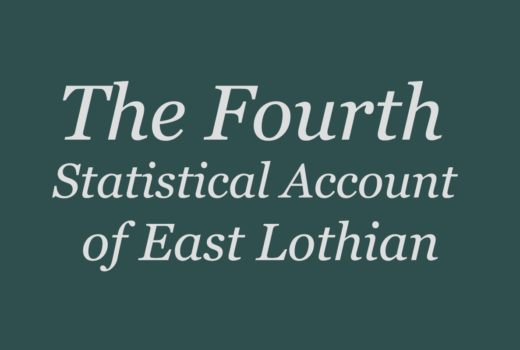Parish Representative & Parish Editor:
Sally Smith
Introduction
The parish of Oldhamstocks is a rough rectangle of 9.7km x 3.2 km enclosing 2337ha (5775 acres), divided into arable lowland and upland heath. The highest part is Monynut Edge (320m) dropping to cropped land where the soil is stony, red and dry. Its eastern boundary is Dunglass Burn, set in a wooded gorge and fed by Oldhamstocks Burn and mountain streams.
Oldhamstocks village lies snugly in the middle, 3.2km from the sea. Set amongst the low foothills of the Lammermuirs at the head of a small valley, it is sheltered from west and north winds by Cocklaw Hill and its spur. A line of well-maintained stone cottages and houses with clay tile roofs hugs the only road. Farmlands surround the village as they always have done, but far from being the lively market town it was for nearly 200 years, in 2000 there were no longer shops here or in any part of the parish. In addition to the cottages, stables and main house which comprise Dunglass estate, three other smaller communities lie seawards: the farm and cottages of Birnieknowes, the houses at Bilsdean, and the group near Dunglass Mill.
Most of the land mass is under cultivation with stone dykes and hedges defining field boundaries. Dunglass Dean remains a corridor of wilderness running from the sea towards the Lammermuirs and is a haven for much of the flora and fauna. In recent years, however, the deans have suffered from fly tipping. The largest pond in the area is on Dunglass estate, once used for curling matches. There are smaller ponds on the farms at Fernylea and Springfield. In 1992, after a section of the lade leading to Dunglass Mill was destroyed during the building of the A1 road bridge and then restored; the old pond was dredged and reinstated.
Cockburnspath, Old Cambus and Abbey St Bathans all originally fell within Oldhamstocks parish in Haddingtonshire. After boundaries were shifted in 1901 these settlements, as well as Grantshouse and Butterdean, became part of Berwickshire in the Borders and the hill farm of Nether Monynut was added to Oldhamstocks parish. The boundary changed again in March 1983, following the local government changes of 1975. This time the Oldhamstocks line was drawn east of Monynut waters so that the Monynut farms fell within the remit of Scottish Borders Council but left East Lothian Council responsible for the greater part of Oldhamstocks. Quite confusingly, and despite the change of local authority boundaries, the parish boundary remained the same; for this account, the local authority boundaries are used (see also Spott parish – Environment and The Local Government Administrative Areas: 1975-2000 by Douglas Buttenshaw).
In an agricultural parish such as this, the end of the war triggered the departure of a disparate group of farm workers – the Land Army, German and Italian prisoners of war, the ‘city girls’ and soldiers on leave. Itinerant Irishmen remained, their help needed particularly at harvest time. Food supplies were much as they were during the war, comparatively plentiful.
